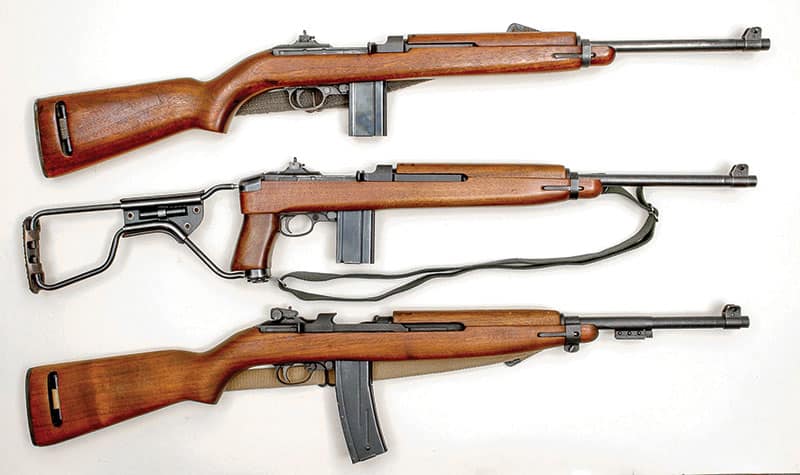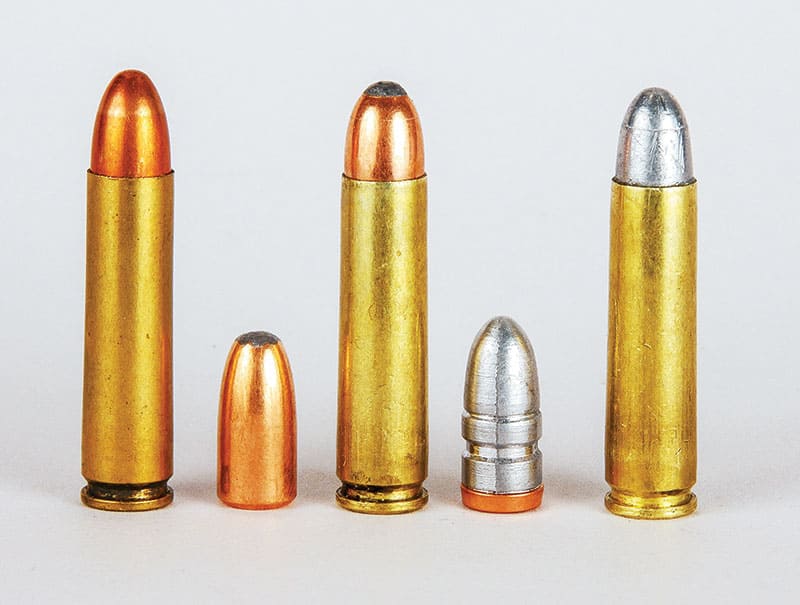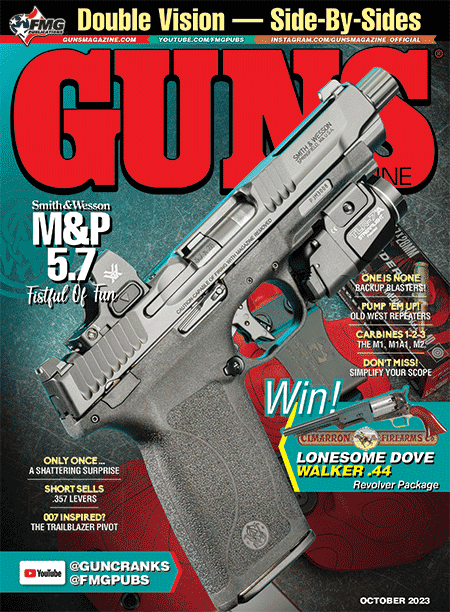M1, M1A1 & M2 Carbines
A Miracle Of Gun building
M1 .30 Carbines and its variations are firearms for which I will never lose my fondness. Somehow back in 1964, I discovered the Office of the Director of Civilian Marksmanship (DCM) was selling surplus M1 Carbines to NRA members for the great sum of $20. My father wasn’t a “gun-guy” but I prevailed upon him to join the NRA so he could get one for me. He did and it arrived in May 1965, just in time for my 16th birthday.
It was made by Underwood, one of the 10 manufacturers of M1 Carbines in the period between 1941 and 1945. I wish it could be said I wore it out by shooting but woefully this was not the case. At my age I was lucky just to have a dollar or so to buy gun magazines every month.
Factory .30 Carbine ammunition was almost out of the question. Then, by mid-summer of 1966, I had discovered handgun target shooting and very reluctantly the carbine was sold for enough bucks to buy a used S&W Model 14 K38 and one box of .38 Special wadcutter loads.
By this time I was acquainted with a few older gents from the local gun club. They told me if I wanted to shoot the K38 much, I would have to become a handloader and bullet caster. It happened and I’m still avid about both endeavors.
Holy Grail
Anyway, back to the .30 Carbines. Time passed but my longing for another M1 Carbine didn’t. Eventually, I prospered enough to buy another, then another and so forth. Even an M1A1 “paratrooper” version fell into my hands. Then, about 15 years ago, what I consider the ultimate .30 Carbine was added to the assortment — the select-fire M2 .30 Carbine: semi-auto or full-auto at the flick of a switch. Ammunition for my .30 Carbines now is no problem as I have handloaded thousands of rounds using both jacketed bullets and my own home-cast ones.
Along the way, I’ve also learned much of the fascinating history of this fine little semi-auto. One fact about them never ceases to amaze me — its design and manufacturing were genuine miracles. Starting in 1941, the U.S. Government bestowed contracts on 10 companies to produce M1 .30 Carbines, only one of which had ever made firearms previously. This was Winchester Repeating Arms, whose engineers designed the prototype in only 90 days in 1941. There was extensive testing and torture trials but in the end, Winchester’s offering was chosen and in September 1941, the government adopted it as the “M1 .30 Carbine.”
When the end of World War II was declared in September 1945, over 6.25 million had been produced. It was a firearms manufacturing feat that will never be equaled by American factories again.
A Lightweight
With 18″ barrels, the M1 and M2 .30 Carbines weigh only about 5 lbs. Surprisingly, the folding “wire” stock of the M1A1 actually adds about a half pound. Of all 10 manufacturers, only Inland Division of General Motors made the M1A1s. Since M1 Carbine barreled-actions and their stocks are drop-in fits, counterfeit M1A1s are common so buyer beware.
Original sights for these guns consisted of a simple L-shaped piece of steel with apertures bored in each leg. The short leg was (supposedly) for 100 yards and the long one for 300 yards. Front sights were blades protected on both sides by wings. There was no provision for mounting bayonets. Toward the end of World War II, fully adjustable rear sights were incorporated as were provisions for fitting bayonets. Most M1 .30 Carbines were recalled post-war and given the new sights and bayonet lugs. If an M1 Carbine is encountered nowadays with the old-style rear sight and sans bayonet lugs, it was either swiped by someone or has been retrofitted. Also, many thousands of M1 Carbines were converted to M2 select fire by the addition of just a few parts. By the Korean War of 1950–1953, M2s were supposed to be standard issue.
Even though enormous numbers of M1, M1A1 and M2 .30 Carbines were produced, they have become rather expensive nowadays. Ordinary ones can cost as much as 50 times what my father spent on my first one. There have been several post-war makers of facsimile .30 Carbines but one manufacturer whose new carbines I’ve had experience with is Inland Manufacturing. I’ve had one of their M1A1 version and a “jungle” version with a 16 ¼” barrel and flash hider. Both have been reasonably accurate by .30 Carbine standards and fully reliable.
Whether a modern shooter is just looking for a piece of history, a small-game carbine or a light recoiling, handy home defense weapon, I’d advise him to consider an M1 .30 Carbine.





